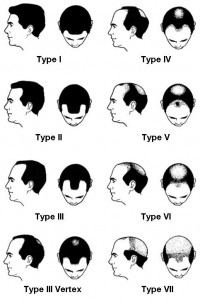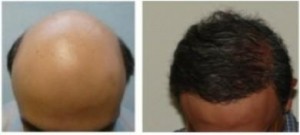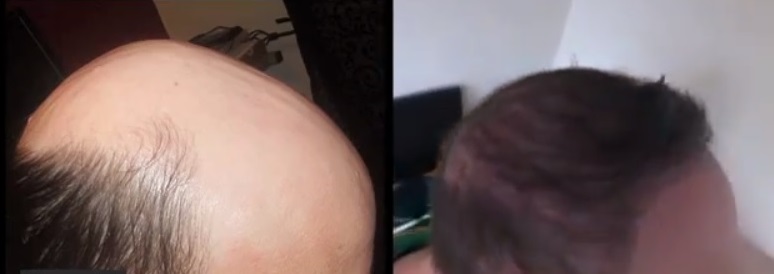
Although there are solutions that have received wide acclaim for the treatment of hair loss, most of them do not work with equal effectiveness on everyone. This is especially true in cases of severe baldness.
- Rogaine
Rogaine is also known as Minoxidil which is an over the counter vasodilator that increases blood flow to the area where it is applied topically. The exact mechanism for how this drug works for hair restoration is not clear. Initially Minoxidil was intended for high blood pressure. In research studies, hair growth was experienced as an unintended side effect. Indeed many individuals have benefited from a twice a day application of Rogaine. But hair growth effects only occur in the crown area, and not the frontal hairline or temples.
Rogaine can be helpful for the beginning stages of hair loss by preventing the hair from further thinning. But there is no guarantee that it can restore hair in all individuals. Rogaine is not a viable treatment options for severe baldness.
- Propecia
The generic name for Propecia is Finasteride. Finasteride is available as a prescription with a strength of 1mg. It inhibits the hormone DHT from affecting the follicle. In some individuals, hair follicles are sensitive to DHT. As a result, hair shafts will fall out. Propecia can therefore help prevent further hair loss in patients with early signs of hair loss. However, Propecia is not a viable Treatment Options for Severe Baldness.
- Strip Surgery
Strip surgery is the considered the traditional hair transplant method. It is not a viable treatment option for severe baldness because the technique requires the excision of a hair bearing strip of skin from the mid posterior region of the scalp. In a severely bald individual, this amount of donor hair would not provide sufficient coverage. Hence Strip hair transplant surgery method is not a workable Treatment Options for Severe Baldness.
- The uGraft- Body Hair Transplant Solution
One of the most recent advances in Follicular Unit Extraction is the use of body hair as a donor source. Refinements in this application by Dr U and the UGraft advanced FUE have led to a beard and body follicle survival rate of over 80% in most instances. With UGraft Treatment for severe baldness is feasible if candidates have ample supplies of beard hair or hair from the legs, shoulders, stomach, chest, nape, or arms.
The main concept behind Follicular Unit Extraction is to excise individual follicles for transplant. Ideally the surgeon is able to cut around the hair graft in order to extract it. But sometimes the punch may not be precisely aligned and the graft is buried instead. The uGraft is a tool that not only prevents this from occurring, it also eliminates a step in the process and shortens the overall operation time. It’s use in conjunction with Body Hair Transplant (BHT) has produced highly successful results as a treatment for severe baldness.


